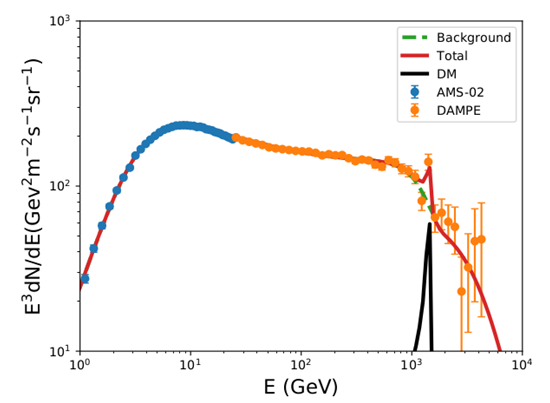According to the recent Plank observation , non-baryonic dark matter (DM) comprises ~26% of the universe’s mass energy . Distinguishing the DM signal from the astrophysical contribution is the key to indirect detection of DM . Dark Matter Particle Explorer (DAMPE) published the highly accurate measurements of cosmic ray electron flux between 25 GeV and 4.6 TeV. A sharp peak exist at ~ 1.4 TeV. The decaying-DM model adopt to explain the unexpected peak . The decay products of the local DM subhalo could contribute to the DMAPE peak with = 3 TeV and τ ~ = 3 TeV and τ ~ s . The local DM subhalo should not be beyond 0.2kpc form solar system with m = s . The local DM subhalo should not be beyond 0.2kpc form solar system with m =   .We also obtain constraints on DM lifetime and the distance of the local DM subhalo by comparison with DAMPE data. .We also obtain constraints on DM lifetime and the distance of the local DM subhalo by comparison with DAMPE data. 
By with PAN Xu Fig.1 The CR-electrons plus positrons flux with best-fit parameters,compared with the AMS-02 and DAMPE data. The work by PAN Xu , ZHANG Cun, etc. accepted by SCIENCE CHINA-PHYSICS MECHANICS & ASTRONOMY, has been published online (https://link.springer.com/article/10.1007%2Fs11433-018-9257-3) |
